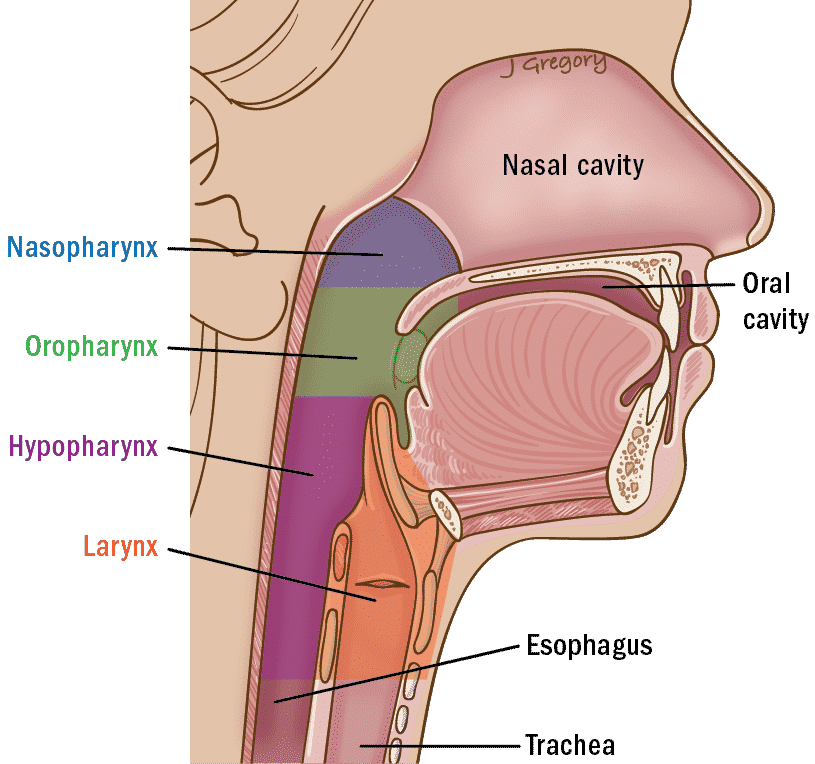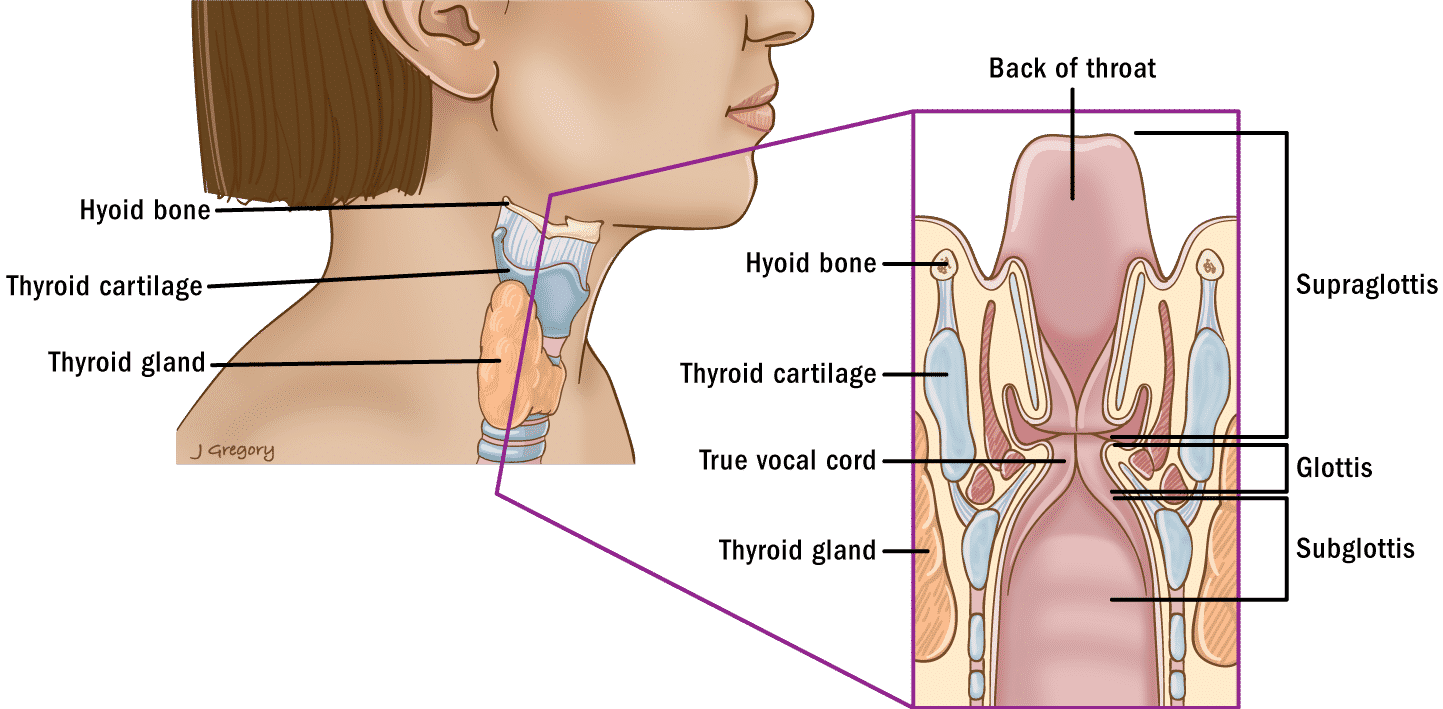The Anatomy of the Larynx, or Voice Box
In order to begin to understand supraglottic cancer, it helps to understand the anatomy of the larynx, or voice box. The larynx is located in the throat below the oropharynx and in front of the hypopharynx. It is in the middle of the neck, and is made up of multiple cartilaginous structures, the most prominent being the thyroid cartilage (sometimes called the Adam’s Apple). One should also be aware that the larynx is located at the top of the trachea which leads directly to the lungs. One of its most important functions is that it is located at the gateway between the swallowing tract and the breathing tract, to help ensure that food or liquids do not go in the wrong direction and into the lungs.


The Supraglottis
The supraglottis is the part of the larynx above the true vocal cords. The supraglottis itself can be broken down into 4 regions.
- The epiglottis (either above or below the hyoid bone): The epiglottis is a flap of cartilage in the throat that prevents food from entering the trachea, or windpipe. This flap closes during swallowing, forcing food down the esophagus and into the stomach.
- The aryepiglottic folds: The aryepiglottic folds are folds in the lining (mucosa) of the larynx that connect the epiglottis and the arytenoids at the entrance of the airway.
- The arytenoids: The arytenoids are a pair of pyramid-shaped pieces of cartilage that form part of the larynx. They help form a joint that allows the vocal cords to move, and are therefore involved in speech.
- The false vocal cords: The false vocal cords are thick folds of mucous membrane just above the true vocal cords. They function as an added layer of protection for the vocal cords and the airway while swallowing.













